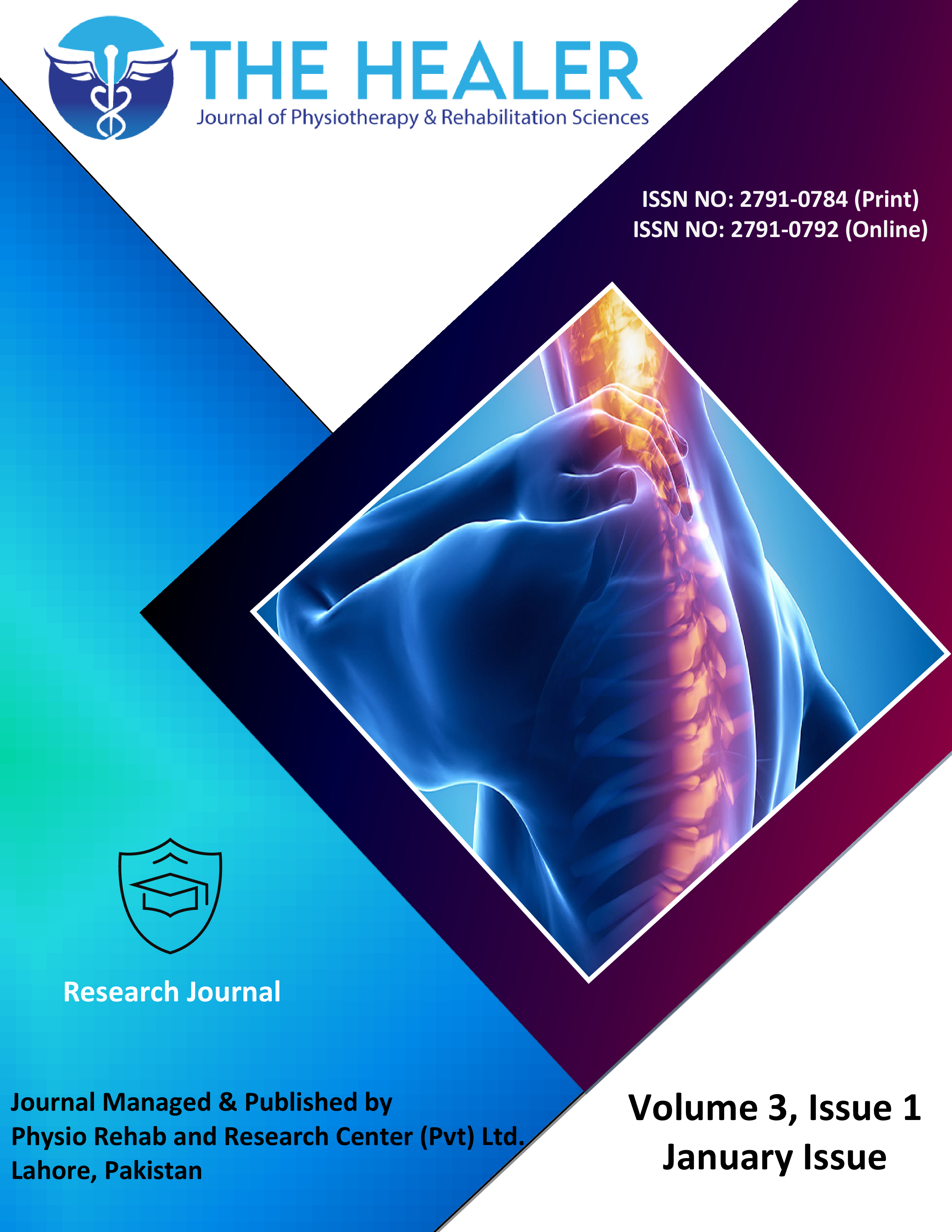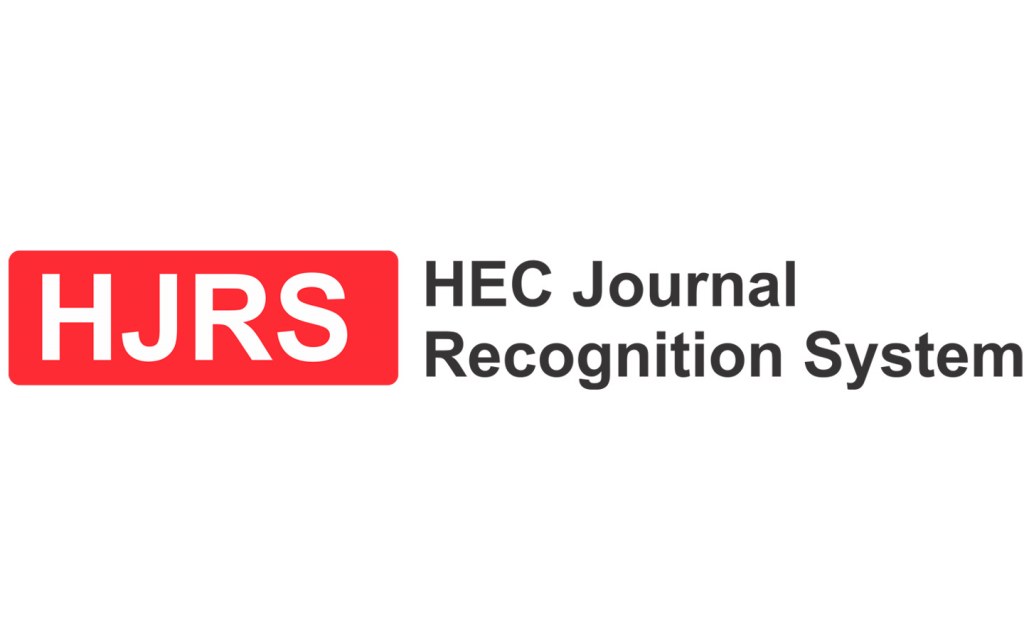Association of Knee Pain in Long Standing and Sitting among University Teachers
Association of Knee Pain in University Teachers
DOI:
https://doi.org/10.55735/hjprs.v3i1.124Keywords:
knee pain, teachers, work-related musculoskeletal painAbstract
Background: Prolonged sitting and standing raise the load on the knee, thus increasing the risk of knee pain and severity among teachers. Objective: To determine the association of knee pain in long-standing and sitting among school and university teachers. Methods: It was a cross-sectional survey conducted on 185 patients with a history of chronic knee pain. The data was collected from school and university teachers in the private and public sectors. Data were collected from both male and female teachers having knee pain and aged between 27 to 60 years and the patients who have a history of knee osteoarthritis, carcinoma, traumatic injury and wound/infection were excluded from the survey. The categorical variables were evaluated by frequency and percentages, while mean and standard deviation were calculated for continuous variables. The correlation was calculated between knee pain reported by university professors due to long periods of standing or sitting. Results: Out of 185 participants, 111 (60%) were females and 74 (40%) were males, with a mean age of 41.37±11.33. There was a weak positive correlation between knee pain and standing hours, which was statistically significant (r=0.273, n =185, p<0.001). There was a negative correlation between knee pain and sitting hours, (r=-0.160, n=185, p<0.05). Conclusion: This study found that prolonged standing hours may increase knee pain among teachers as compared to prolonged sitting. More standing hours during academic activities tend to increase knee pain while prolonged sitting did not increase that pain. There was a negative correlation between knee pain and sitting hours, and weak positive correlation between knee pain and standing hours, which was statistically significant.
References
Shalhoub S, Cyr A, Maletsky LPJJoOR. Correlation between knee anatomy and joint laxity using principal component analysis. 2022.
Ballis R, Shabani BH, Bytyqi D. Anatomy of the Knee. Atlas of Orthopaedic Surgical Approaches to the Lower Limbs: Springer; 2022: 25-31.
van Minnen BS, van der Veen AJ, van de Groes SA, Verdonschot NJ, van Tienen TGJJoEO. An anatomically shaped medial meniscus prosthesis is able to partially restore the contact mechanics of the meniscectomized knee joint. 2022; 9(1): 1-12.
Tropf JG, Colantonio DF, Tucker CJ, Rhon DIJTjoks. Epidemiology of meniscus injuries in the military health system and predictive factors for arthroscopic surgery. 2022.
Vinagre G, Cruz F, Alkhelaifi K, D'Hooghe PJJoI. Isolated meniscus injuries in skeletally immature children and adolescents: state of the art. 2022.
Ji X, Huang X, Zhang Y, Zhao M, Liu Y, Cheng YJM. Peripheral patellar denervation has a better effect in reducing postoperative anterior knee pain than patellar resurfacing in TKA. 2022; 101(45).
D’Ambrosi R, Meena A, Raj A, et al. In elite athletes with meniscal injuries, always repair the lateral, think about the medial! A systematic review. 2022: 1-11.
Ahmadi O, Motififard M, Heydari F, Golshani K, Azimi Meibody A, Hatami SJTUJ. Role of point-of-care ultrasonography (POCUS) in the diagnosing of acute medial meniscus injury of knee joint. 2022; 14(1): 1-8.
Mortazavi SMJ, Moharrami A, Tamhri S, Okati A, Shamabadi AJTJoKS. Time from injury is the key predictor of meniscal injury in ACL-deficient knees. 2022; 35(10): 1091-6.
Zhang B, Ma BJRBdMdE. Meniscus injuries under high-intensity training in cycling athletes. 2022; 29.
Yeo PY, Seah AMJ, Visvalingam V, et al. Anterior cruciate ligament rupture and associated Segond fracture: Incidence and effect on associated ligamentous and meniscal injuries. 2022; 30: 36-40.
Deng T, Li X, Guo Z, et al. Management Strategies and Imaging Observation of Early and Delayed Intelligent Treatment of Meniscus Sports Injury under Knee Osteoarthroscopy. 2022; 2022.
Tan L, Liang J, Feng J, et al. Medial meniscus tears are most prevalent in type I ACL tears, while type I ACL tears only account for 8% of all ACL tears. 2022: 1-9.
Murtaza S, Amirali A, Rafay Gul D, Iqbal JJAotRSfCB. Diagnsostic Accuracy of Magnetic Resonance Imaging with Arthroscopy in the Diagnosis of Meniscal Tear. 2022; 26(01): 629-37.
Dawkins BJ, Kolin DA, Park J, et al. Sensitivity and Specificity of MRI in Diagnosing Concomitant Meniscal Injuries With Pediatric and Adolescent Acute ACL Tears. 2022; 10(3): 23259671221079338.
Macri EM, Young JJ, Ingelsrud LH, et al. Meaningful thresholds for patient-reported outcomes following interventions for anterior cruciate ligament tear or traumatic meniscus injury: a systematic review for the OPTIKNEE consensus. 2022.
Coenen P, Willenberg L, Parry S, et al. Associations of occupational standing with musculoskeletal symptoms: a systematic review with meta-analysis. British journal of sports medicine 2018; 52(3): 176-83.
Antle DM, Vézina N, Messing K, Côté JN. Development of discomfort and vascular and muscular changes during a prolonged standing task. Occupational Ergonomics 2013; 11(1): 21-33.
Coenen P, Parry S, Willenberg L, et al. Associations of prolonged standing with musculoskeletal symptoms—a systematic review of laboratory studies. Gait & Posture 2017; 58: 310-8.
Abdulmonem A, Hanan A, Elaf A, Haneen T, Jenan A. The prevalence of musculoskeletal pain & its associated factors among female Saudi school teachers. Pakistan journal of medical sciences 2014; 30(6): 1191.
Erick PN, Smith DR. A systematic review of musculoskeletal disorders among school teachers. BMC musculoskeletal disorders 2011; 12(1): 260.
Damayanti S, Zorem M, Pankaj B. Occurrence of Work Related Musculoskeletal Disorders among School Teachers in Eastern and Northeastern Part of India. International Journal of Musculoskeletal Pain Prevention 2017; 2(1): 187-92.
Alias AN, Karuppiah K, How V, Perumal V. Does Prolonged Standing at Work Among Teachers Associated With Musculoskeletal Disorders (MSDs)?
Picavet HSJ, Pas LW, Van Oostrom SH, Van Der Ploeg HP, Verschuren WM, Proper KI. The relation between occupational sitting and mental, cardiometabolic, and musculoskeletal health over a period of 15 years–the Doetinchem cohort study. PloS one 2016; 11(1): e0146639.
Coenen P, Healy GN, Winkler EA, et al. Associations of office workers’ objectively assessed occupational sitting, standing and stepping time with musculoskeletal symptoms. Ergonomics 2018; 61(9): 1187-95.
Daneshmandi H, Choobineh A, Ghaem H, Karimi M. Adverse effects of prolonged sitting behavior on the general health of office workers. Journal of lifestyle medicine 2017; 7(2): 69.
Arshad H, Khattak HG, Anwar K, Bilal HJC. Prevalence, pattern of musculoskeletal pain disorders and related factors among female school teachers. 2021; 93(119): 119.
Bhatti SA, Waseem I, Akhtar M, Arslan SA, Batool F, Ahmed AJPBJ. Association of Patellofemoral Syndrome with Prolonged Duration of Sitting among Teachers; A Cross-Sectional Survey: Association of Patellofemoral Syndrome with Prolonged Duration of Sitting. 2022: 321-4.

Downloads
Published
How to Cite
License
Copyright (c) 2023 The Healer Journal of Physiotherapy and Rehabilitation Sciences

This work is licensed under a Creative Commons Attribution 4.0 International License.
CC BY












